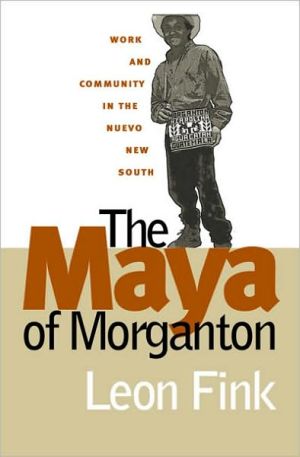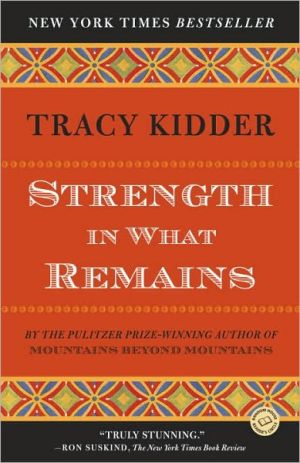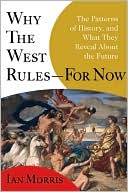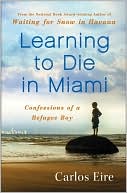The Maya of Morganton: Work and Community in the Nuevo New South
"The arrival of several hundred Guatemalan-born workers in a Morganton, North Carolina, poultry plant sets the stage for this dramatic story of human struggle in an age of globalization. Virtually overnight, a once quiet industrial center nestled in the foothills of the Blue Ridge Mountains finds itself the new home to one of the hemisphere's oldest cultures - and to a protracted struggle for social justice." "When workers' concerns about safety and fairness spark a strike during the early...
Search in google:
The arrival of several hundred Guatemalan-born workers in a Morganton, North Carolina, poultry plant sets the stage for this dramatic story of human struggle in an age of globalization. When laborers' concerns about safety and fairness spark a strike and, ultimately, a unionizing campaign at Case Farms, the resulting decade-long standoff pits a recalcitrant New South employer against an unlikely coalition of antagonists. Mayan refugees from war-torn Guatemala, Mexican workers, and a diverse group of local allies join forces with the Laborers union. The ensuing clash becomes a testing ground for "new labor" workplace and legal strategies. In the process, the nation's fastest-growing immigrant region encounters a new struggle for social justice. Using scores of interviews, Leon Fink gives voice to a remarkably resilient people. He shows that, paradoxically, what sustains these global travelers are the ties of local community. Whether one is finding a job, going to church, joining a soccer team, or building a union, kin and linguistic connections to the place of one's birth prove crucial in negotiating today's global marketplace. A story set at the intersection of globalization and community, two words not often linked, The Maya of Morganton addresses fundamental questions about the changing face of labor in the United States. Chronicle of Higher Education [Fink] considers the Maya's lives and reception in Morganton, how varied past experiences of war and deprivation in Guatemala shaped their decisions on whether to take labor action, and how churches, a burial society, and other immigrant community institutions reinforced their communal resolve.
The Maya of Morganton\ Work and Community in the Nuevo New South \ \ By Leon Fink \ The University of North Carolina Press\ Copyright © 2003 University of North Carolina Press\ All right reserved.\ ISBN: 978-0-8078-2774-1 \ \ \ \ Introduction\ It was sometime in early spring 1997 when I first heard about a labor conflict in Morganton, North Carolina, a usually quiet industrial center of sixteen thousand people perched at the edge of the Great Smoky Mountains. I would soon learn that this was no isolated incident or temporary labor relations breakdown that I had stumbled upon but a decadelong war of position between determined and well-organized workers on the one hand and a classically recalcitrant employer on the other. It began with an overnight walkout in 1991, erupting into a mass work stoppage and multiple arrests in May 1993 and climaxing in a four-day strike and successful union election campaign in 1995. Confronting the company with a weeklong walkout and hunger strike in 1996 and subsequently standing firm for six years in the face of the company's absolute refusal to sign a collective bargaining contract, the workers at Case Farms poultry plant etched a profile of uncommon (if ultimately frustrated) courage in demanding a voice and degree of respect at the workplace. \ From the start of my inquiries, news from the Case Farms battle posed a threefold fascination for a North American labor historian living (until the fall of 2000) three hours from Morganton by car in the university town of Chapel Hill. First, the events in Morganton were remarkable enough in themselves. For over twenty years I had watched "organized labor" virtually disappear off the map in North Carolina, losing battle after battle in campaigns among textile, furniture, and meat-processing workers. Indeed, when I had arrived in Chapel Hill in 1977 as the university's first designated "labor historian," one joke went that "only a Fink" could get such a job at a southern school. I laughed but did think twice when I discovered that my closest labor history colleague was Gary Fink at Georgia State University! Throughout my tenure at UNC, the state was locked in a seesaw battle with its South Carolina neighbor for the dubious honor of being the least unionized state in the country, a country that as a whole was experiencing a severe slippage of union representation in the private-sector workforce. What is more, the food-processing industry-especially meat products, of which poultry was a part-had earned a reputation as the most determined of union foes. In meatpacking, for example, where a set of "new-breed" packers based on corporate mergers and buyouts set the pace, both unionization and wages had fallen by half in the 1980s alone.\ But there were two additional reasons to be intrigued by the Morganton story. The five-hundred-person Case Farms plant, estimated in 1995 as 80 percent Spanish-speaking-of whom 80 to 90 percent were Guatemalan and the rest Mexican-highlighted a demographic transformation of the U.S. labor force, nowhere more dramatic than in what one commentator has called the "nuevo New South" and, within the region, nowhere more so than in North Carolina, where the growth of the Hispanic population reached a whopping 394 percent in the decade 1990-2000. Even more remarkably, the fact that the "Guatemalans" were nearly all Highland Maya-people who trace their bloodline and their languages back to the ancient "corn people"-suggested a most dramatic confrontation between what Joseph Schumpeter called the "creative destruction" of market capitalism and the social organization of one of the hemisphere's oldest cultures. How was it, then, that in a state with not a single organized chicken-processing factory, a group of Central American refugees bucked the tide of history? Who were these people, where did they come from, and why did they act the way they did? Were they crazy and disoriented or did they know something about social struggles of which others were ignorant? In thinking about the uphill task that the immigrant poultry workers had assumed, I could not help but remember the comment reportedly uttered by slave rebel Nat Turner before his execution: "Was not Christ crucified?" [map]\ These are the issues I have sought to address in the following pages. In doing so, I have inevitably encountered other questions that have drawn my attention. Apart from the labor struggle itself, the perception and reception of the modern-day Maya in North Carolina became a crucial part of my story. How did an established community of whites and blacks react to the new émigrés? Who were the workers' local allies? And how did the union that came to represent them-the Laborers International Union of North America (LIUNA)-fit the Morganton revolt into its own organizational strategies? A final arena of concern focuses on the nature of cultural adjustment among the new migrant workers. With what capacity and vision but also at what cost did the Guatemalan Maya transplant themselves to a new North American setting? How did the act of migration and, for some, permanent immigration affect their community's welfare, both in the United States and "back home" in Guatemala?\ The story of the Maya in Morganton effectively joins one of the newest buzzwords of social science, "globalization," with one of the oldest, "community." Juxtaposing the two concepts, in fact, permits us to cover a great deal of interpretive ground. The entry of Guatemalan war refugees and later those we might well consider "economic refugees" into the poultry plants of North Carolina reflects the increasing fluidity of both world investments and labor markets. In ways that recall the experience of their nineteenth-century immigrant predecessors, the émigré Mayan workers "use" community at once to defend themselves against employer exploitation and to advance the interests of family and friends across international borders. These new immigrant carriers of a rural, communal culture may indeed offer instructive lessons to a more metropolitan labor movement in the United States. Even as contemporary sociologists inveigh against the decline of a broad-based "civic culture" in today's consumer society, more and more of the hard work of the country is actually in the hands of people with a quite sturdy family and community structure-if little else. The combination of group ties and the necessity of relying on those ties in an alien environment creates an opening for worker mobilization. This is not to deny the obstacles that confront today's bottom-rung labor force. Both modern-day power and money are stacked against them as never before. Nor is it to suggest that members of the Mayan diaspora are not themselves undergoing profound cultural displacement and acting in ways different from their revered ancestors. All of the above are true. The very richness of the mix, however, creates one of the more dramatic trials of the human spirit provoked by the faceless forces of globalization. This book is one testimony to those trials.\ Mixing narrative with commentary, each chapter of the book is organized around a specific theme of its own. Chapter 1 ("The Way It Is in Morganton") prepares us for the arrival of the Maya by concentrating on the previously settled population-whites, blacks, and Hmong refugees-of the town. In the midst of fears and some resentment of the newcomers' demands on local services, a "progressive," church-based group of professionals offered a crucial welcome. Chapter 2 ("Flight of the Happy Farmers") focuses on the initial Guatemalan migrants- Q'anjob'al-speaking Maya from the mountain villages of the northwestern province of Huehuetenango-framing the first worker protest at the poultry plant against a longer background of Guatemalan civil war, terror, and escape. Even as a climate of coercion in Guatemala and the bias of U.S. immigration policy shrouded effective identification of the immigrants' past political experience, a hint of transnational peasant wisdom in dealing with authority emerged among the raw factory recruits. Chapter 3 ("How the Dead Helped to Organize the Living") looks behind the pivotal strike of 1995 to the wellsprings of solidarity among the single largest group of Case Farms workers-Awakatekos and Chalchitekos from the commercial agricultural valley of Aguacatán. An exploration of selective, family-level migration strategies reveals both the source of communal solidarity across borders and new grounds for divisions among a conflict-ridden people. Chapter 4 ("No One Leader") examines the process of local union building with emphasis on the fragility of leadership. The alliance between a Salvadoran woman union organizer with young male workers from both Guatemala and Mexico survived continuous challenges from without and within. Chapter 5 ("The Workers Are Ready") sets the Morganton union struggle within a context of national labor and political forces attempting to jump-start a larger workers' movement for social justice. In particular, the Laborers union, fresh from federal indictment for corruption, tried to save its soul as well as its economic welfare by backing an exotic underdog.\ By way of conclusion, the book takes two different analytic approaches. Chapter 6 ("Changing Places") steps back from the workplace to inquire into the individual struggles of adaptation and identity among the global laborers and their families. Three different patterns of migration-birds of passage, assimilation, and transnational citizenship-it is argued, mix uneasily within the contemporary global marketplace. Chapter 7 ("Sticking Together") connects the Morganton union story at once to prior immigrant history and to contemporary struggles for solidarity at both ends of the global migrant stream. Remarkably, and perhaps counterintuitively, we watch as migrant Mayan workers in the United States grope for a broader solidarity, while potentially fratricidal conflicts over "identity politics" and interethnic rivalries threaten their home communities.\ Here, then, is the common thread of The Maya of Morganton: Work and Community in the Nuevo New South. To understand the motives and behavior of Third World workers-either on their home turf or as immigrant recruits to more developed metropoles-we need to fit them into a global political economy of competitive markets, changing technology, and a managerial logic of labor control. Yet, we must also recognize them as agents who continue to draw on local wisdom in advancing the interests of family, friendships, and community even in a faraway land.\ Finally, I would like to add a brief word on the oral history sources for this work. Unlike studies in sociology, anthropology, or other social sciences, this book, as the reader will immediately notice, identifies its subjects by their real names. This is, in part, a disciplinary distinction. "History" generally takes the individual as its primary unit of analysis and insists that individuals, in their very peculiarity, "count." It is all the more important, then, that those who-like immigrant poultry workers-have heretofore been left out of public awareness as well as the scholarly record should make their properly identified mark.\ Yet, I am not ignorant of the special risks involved in writing about today's new immigrant workforce. No doubt, Case Farms-like virtually every other low-wage manufacturing firm across the country-employs a significant number of illegal (i.e., undocumented or improperly documented) workers. But when I raised the issue of confidentiality with workers themselves, they regularly waved it off. Many with whom I talked arrived in the United States early enough to apply for naturalization. In a few instances, they told me that they had given me their "Case Farms" name, not their given name, and I investigated no further. Moreover, the overwhelming majority of those consulted for the book no longer work at Case Farms and in some cases are no longer in the country. I received explicit permission to quote all those cited in the text. For anyone who hesitated, I offered the option of anonymity or off-the-record comments. As it happened, the only respondents who took up either of these options were former company executives or their legal counsel.\ (Continues...)\ \ \ \ \ Excerpted from The Maya of Morganton by Leon Fink Copyright © 2003 by University of North Carolina Press. Excerpted by permission.\ All rights reserved. No part of this excerpt may be reproduced or reprinted without permission in writing from the publisher.\ Excerpts are provided by Dial-A-Book Inc. solely for the personal use of visitors to this web site. \ \
AcknowledgmentsAbbreviationsIntroduction11The Way It Is in Morganton72Flight of the Happy Farmers343How the Dead Helped to Organize the Living544No One Leader795The Workers Are Ready1046Changing Places1407Sticking Together177Notes201Glossary of Spanish Terms239Index241
\ Chronicle of Higher Education[Fink] considers the Maya's lives and reception in Morganton, how varied past experiences of war and deprivation in Guatemala shaped their decisions on whether to take labor action, and how churches, a burial society, and other immigrant community institutions reinforced their communal resolve.\ \ \ \ \ From the PublisherLeon Fink's extraordinarily revealing probe into the immigrant world of a North Carolina poultry plant is essential reading for anyone seeking to understand the twenty-first-century meaning of globalization. (Nelson Lichtenstein, author of State of the Union: A Century of American Labor)\ \








